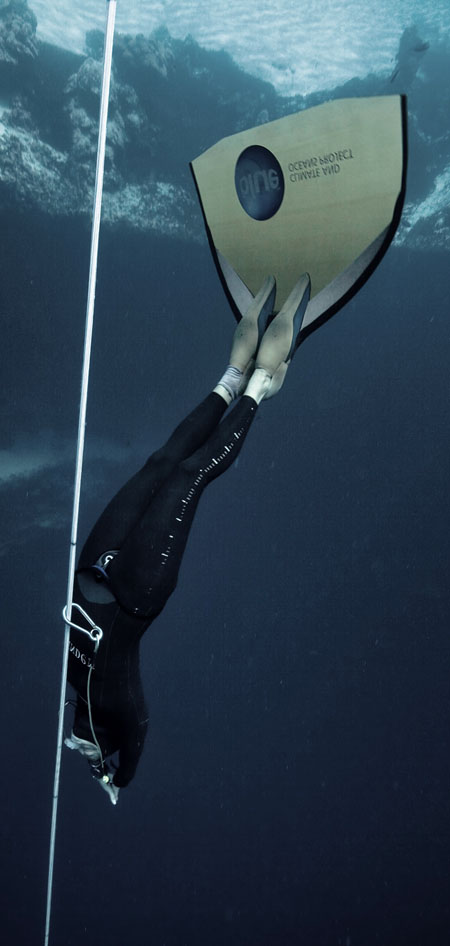Freediving Physiology
The mammalian dive reflex is our body’s natural response to being in water. It begins the moment we put our face in water and it stops once our airways are clear to breathe once more. We all have it – to varying degrees. And it can be trained.
I see it as the body’s natural survival mechanism – it is our instinctive will to live. It has various stages, becoming more intense, according to the physical need. It is totally automatic and is what enables us to dive to extreme depths, for minutes at a time and come up smiling!
Stage 1 - Immersion
Try this at home – find your pulse, put your face in a bucket of cold water, and hold your breath for at least a minute (never do this alone please!). You will notice your pulse will drop. Automatically. This is your brain picking up signals from receptors in your cheeks telling it that the airways are submerged so it should slow everything down in order to conserve oxygen.
Stage 2 - Constriction
Vasoconstriction is a fancy word meaning that your veins and arteries contract. This happens in your arms and legs – your peripheral circulatory system – forcing your blood into the core of your body, ensuring less oxygen is burned by the muscles and optimal supply goes to the essential organs of your heart, lungs and brain. Clever, eh!
Stage 3 - Spleen contractions
The spleen was thought to be a defunct organ, a bit like the appendix, for many years. However, we now know that it's one of the magical components of our dive response. When our brain detects that the oxygen levels are beginning to drop, it sends messages to the spleen, which is a spongey organ that holds oxygenated blood, to contract. These contractions squirt nice fresh oxygen-rich blood into our circulatory system to boost the O2 levels in the blood travelling to our vital organs.
Stage 4 - Blood Shift
Blood shift is an extension of vasoconstriction, but is the really clever part that means we can dive REALLY deep without damaging our lungs. As with everything in our body, our lungs have a maximum flexibility limit. As they compress due to increasing water pressure, the air space inside gets smaller. There is a limit to how small this can go before the lung tissues become damaged. So, the capillaries inside the lungs, which conduct the gaseous exchange between the blood and the alveoli, get BIGGER, filling with more blood, to make even more efficient gaseous exchange and to allow the airspaces to contract even further without tearing or stressing the lung tissues. See, really clever!
Stage 4-3-2-1 - Black-out
As we return to the surface, all of the above happens in reverse. The biggest danger in freediving is the final part of the ascent, the last 10 metres or so. As the diver gets low on oxygen, the lungs are also expanding, and in order to expand they need to fill with gas. Some of the gases drawn out of the blood into the lungs may well be oxygen, and as we’re getting low on oxygen already, this could be the last bit that keeps us awake. Black-out is our body’s final survival response – even though it looks like the opposite! Registering very low levels of oxygen in the blood, the brain decides to protect itself. In order to do this it must stop any further use of oxygen in the system, so basically sends us to sleep to stop us moving or working. This is where our safety diver is CRUCIAL – they bring us to the surface, or if we’re already there, make sure we’re lying on our backs and our airways are clear to breathe. Normally the body starts breathing automatically as stage one happens in reverse – the receptors in the cheeks register air on our face and send our brain the ‘ok’ signal for us to breathe – bringing us full circuit on the dive reflex. Super clever, isn’t it!


